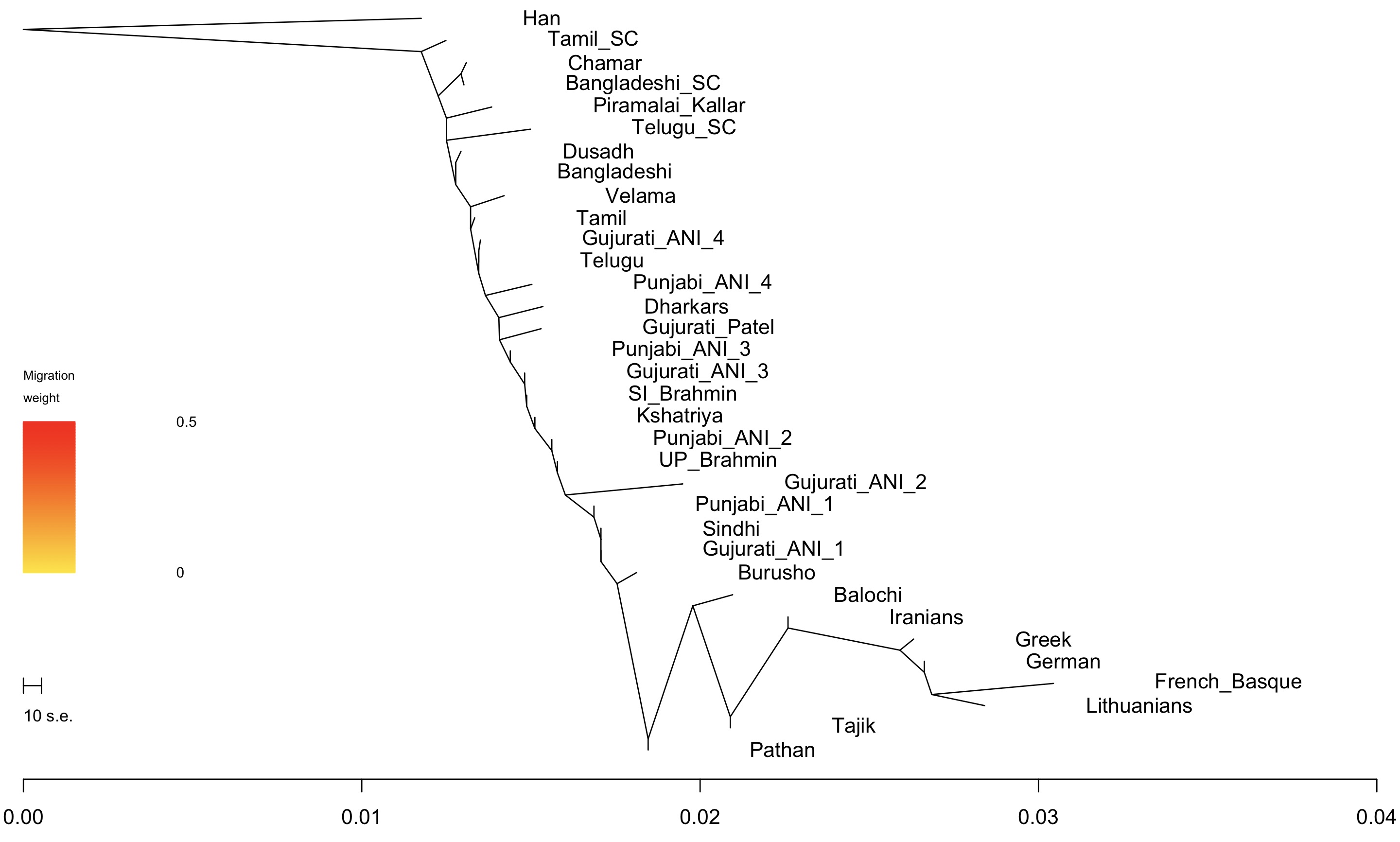At my other blog. Some charts.
Category: Genetics
Notes on South Asian genetics, 2018

In the post below Zach observes that the progressive author of a piece criticizing Ajit Pai has to note she too is a Gaud Saraswat Brahmin. Of course, she is progressive and opposes casteism no doubt. But to me “caste-dropping” that you are a Brahmin is like criticizing standardized testing, while observing that you also aced your standardized test. Not that that matters. Or that it proves anything.
But I’m posting this because there was a section on the genetic purity of Gaud Saraswat Brahmin’s of Karnataka. It caught my attention because I knew it was likely false. I’ve looked at South Indian Brahmins, and they generally look like they have gene flow from other South Indians. Also, if you use something called your eyes you can see that some South Indian Brahmins do not look like pure Indo-Aryan specimens at all.
Several years ago my friend Zack collected a bunch of data via his Harappa project. We’ve come further since then, but it’s still one of the best sources of information we have. Looking at the data there, and elsewhere, we can say a few things about South Asian genetics.
- Jatts are different. I don’t know much about Jatts personally, aside from the fact that they are quite proud of being Jatt online. But in Zack’s data, and my own analysis in the SAGP, Jatts are highly inflated for “European-like” ancestry compared to populations around them. They have the highest proportions in their part of South Asia. Even higher than Pathans.
If you asked me to say why, at this I do think Jatts do have a more recent gene flow than other groups in South Asia. If you talk to Jatts online about their history, you will know what their hypothesis for this exotic element is.
- Brahmins are different from other South Asians, and from each other. It will surprise no one that Brahmins are often somewhat different from non-Brahmins genetically. But, they also differ from each other.
Both South Indian and Bengali Brahmins mixed with the local population. Probably on the order of ~25% of the ancestry of these two Brahmin communities can be attributed to the local substrate. But, if you correct for East Asian admixture Bengali Brahmins are actually quite similar to the Brahmins of the Gangetic plains to the west. This comports with history.
A similar fraction seems reasonable for South Indian Brahmins, though perhaps more. The key issue that I have in this case is that the “European-like” proportion of South Indian Brahmins is about half of that of North Indian Brahmins. This would indicate half dilution. The admixture was probably from the higher end of the non-Brahmin caste hierarchy.
To get a sense of what I’m talking about, here are some percentages:
| Ethnicity | Dataset | N | SIndian | Baloch | Caucasian | NEEuro | NEEuro ratio |
| ap-brahmin | 25 | 49% | 36% | 3% | 6% | 6% | |
| iyengar-brahmin | harappa | 8 | 47% | 37% | 4% | 6% | 6% |
| iyer-brahmin | harappa | 11 | 47% | 37% | 5% | 5% | 5% |
| brahmin-tamil-nadu | metspalu | 2 | 47% | 38% | 6% | 5% | 5% |
| tn-brahmin | 14 | 47% | 38% | 6% | 4% | 5% | |
| karnataka-brahmin | harappa | 5 | 46% | 35% | 5% | 6% | 7% |
| oriya-brahmin | harappa | 2 | 45% | 35% | 2% | 8% | 9% |
| kerala-brahmin | harappa | 1 | 43% | 39% | 4% | 6% | 6% |
| brahmin-uttar-pradesh | metspalu | 8 | 42% | 36% | 5% | 12% | 12% |
| bengali-brahmin | harappa | 8 | 41% | 33% | 5% | 10% | 11% |
| up-brahmin | harappa | 4 | 39% | 37% | 7% | 11% | 12% |
| bihari-brahmin | harappa | 1 | 39% | 38% | 5% | 11% | 12% |
| rajasthani-brahmin | harappa | 2 | 34% | 36% | 8% | 12% | 13% |
| punjabi-brahmin | harappa | 3 | 34% | 39% | 10% | 11% | 11% |
| kashmiri | harappa | 3 | 30% | 37% | 14% | 9% | 10% |
| pashtun | harappa | 7 | 19% | 34% | 20% | 11% | 13% |
| maharashtrian | harappa | 6 | 46% | 35% | 5% | 5% | 6% |
| tamil-nadar | harappa | 5 | 57% | 31% | 2% | 0% | 0% |
| gujarati-patel | harappa | 2 | 55% | 41% | 0% | 0% | 0% |
| bengali | harappa | 11 | 47% | 27% | 2% | 4% | 5% |
| ap-reddy | harappa | 6 | 54% | 36% | 3% | 0% | 0% |
Don’t take the percentages as literal populations.
- Some groups that think they are special are not so special. Kashmiri Pandits, for example, fancy themselves as somewhat better than other South Asians, often because of their West Asian or even European physical appearance. But the genetic data indicates ancestrally they’re not surprising in any way in the context of their geographic locale.
- Geography is not that predictive. Well, it sort of is. But you see that groups like Chamars in Uttar Pradesh are similar to South Indian populations.
